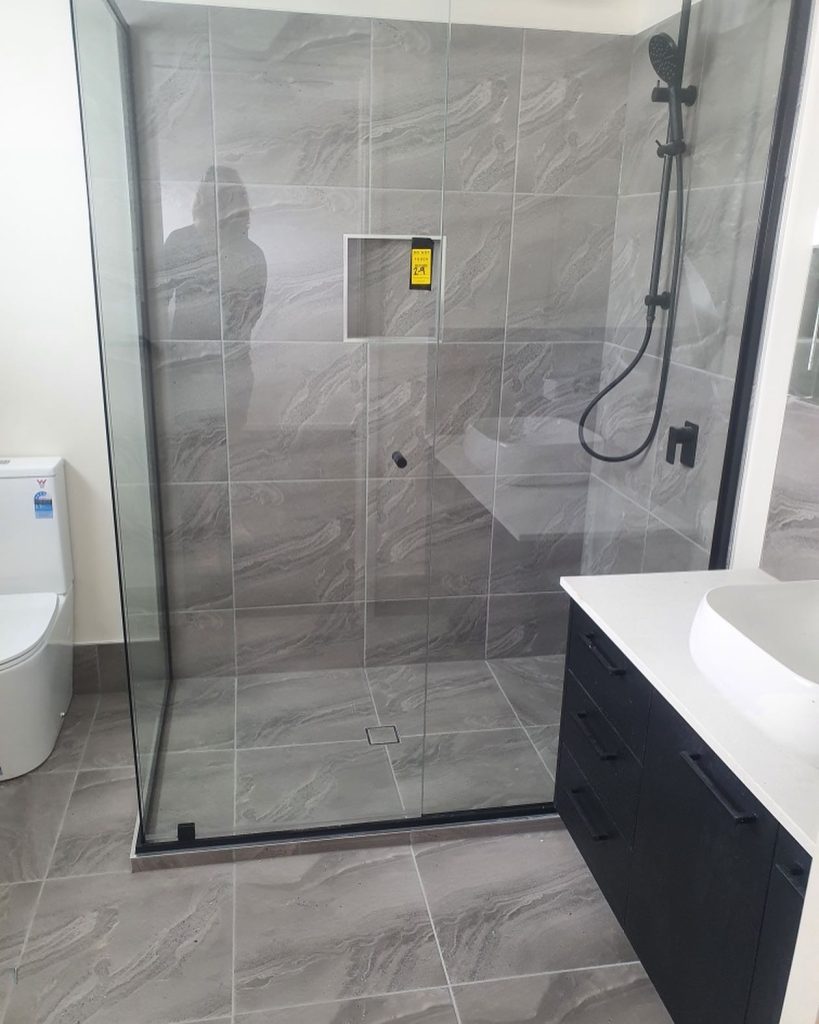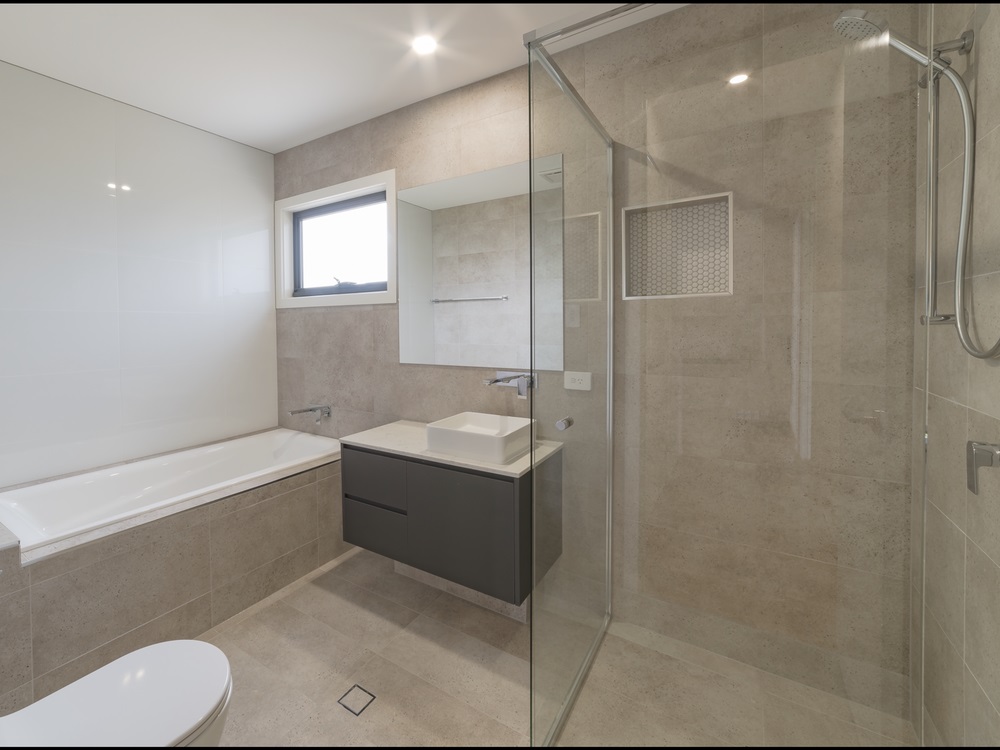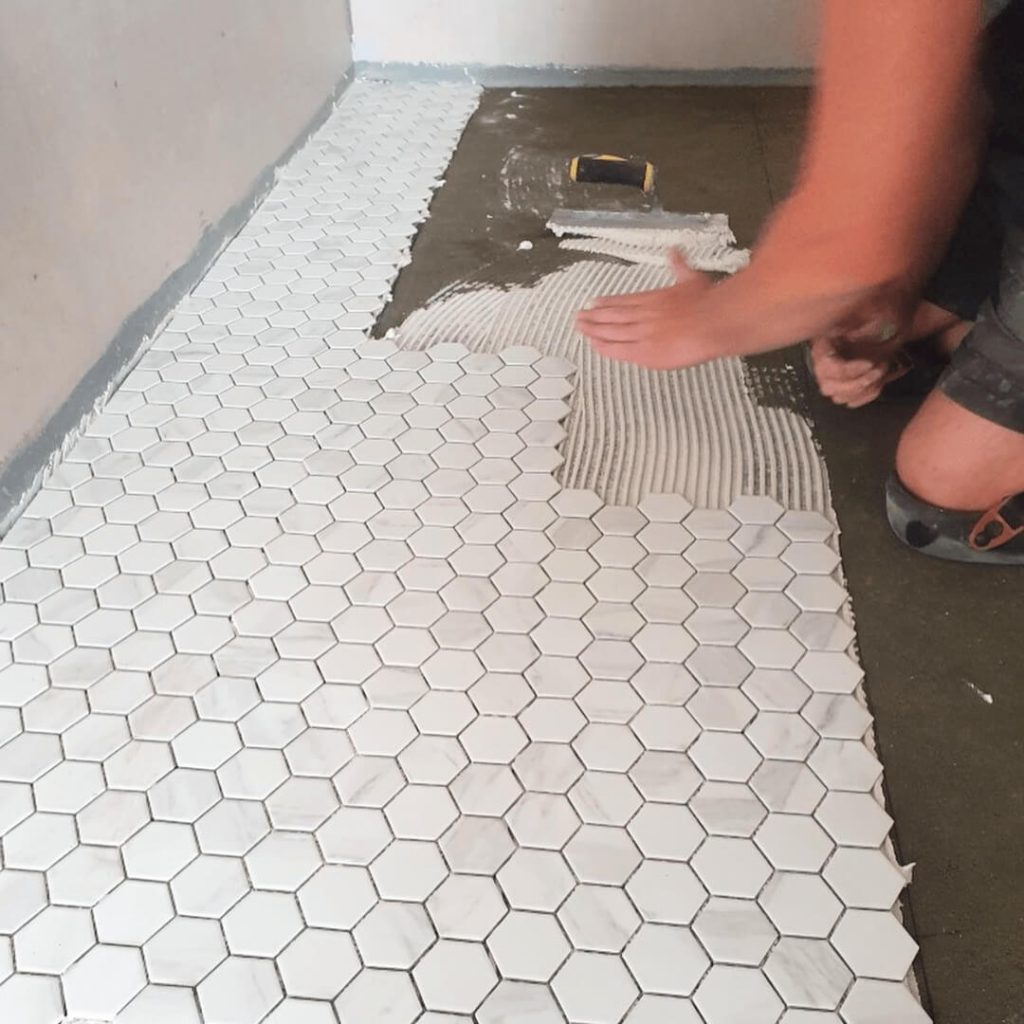Expert Tips for Selecting the Perfect Bathroom Tiles: When it comes to choosing porcelain tiles for your flooring, it's essential to evaluate the thickness of the tiles suitable for both walls and floors. Ensuring consistent batches for colour matching is crucial, as is verifying slip ratings for safety in bathroom flooring. Additionally, be mindful of your budget for feature areas within your space.
Strategically utilise premium tiles to create stunning visual effects while opting for standard-sized tiles to help reduce installation labour costs effectively.
Choosing tiles for a bathroom renovation can feel daunting due to the vast array of options available, with many appearing quite similar in shades of white, beige, and grey. Distinguishing among these choices can be particularly challenging, especially when considering the different price points.
By delving into the nuances of tile pricing and understanding the key factors that influence your selections, you can make well-informed choices. This approach will help you avoid costly mistakes, save money, and achieve a luxurious finish that resonates with your personal style.
This detailed guide provides invaluable insights specifically for Brisbane homeowners, empowering them to make smart, budget-friendly decisions when selecting bathroom tiles.

Understanding Key Factors That Drive Tile Pricing
Evaluating Material Composition for Enhanced Durability
<a href=”https://writebuff.com/choosing-the-perfect-tiles-for-your-new-bathroom-guide/”>Porcelain tiles</a> are renowned for their exceptional density, reduced porosity, and superior durability compared to standard ceramic tiles. Crafted from finer clay types and subjected to higher firing temperatures, they exhibit remarkable strength often associated with a higher price point.
In bathroom settings, where moisture exposure and longevity are paramount, selecting porcelain tiles typically represents a prudent investment. However, ceramic tiles have seen substantial advancements over recent years, offering budget-friendly alternatives that perform excellently on walls and in areas with lower foot traffic.
The Impact of Tile Manufacturing on Quality and Cost
Tile quality is influenced by more than just the materials used; the manufacturing process plays a crucial role in determining their characteristics.
Single-fired tiles tend to be less expensive but may exhibit inconsistent quality across the board. In contrast, double-fired tiles provide richer finishes, a wider range of vibrant colour options, and increased durability, making them a worthy investment for discerning homeowners striving for excellence in their renovations.
Tiles with rectified edges are meticulously cut with advanced machinery, ensuring uniformity in both size and shape. Although these tiles come with a higher price tag, they facilitate minimal grout lines, resulting in a seamless and contemporary appearance that many homeowners desire for modern bathroom designs.
The Importance of Tile Thickness for Structural Integrity
When selecting tiles, it is vital to recognise that tiles intended for flooring must be thicker and sturdier than those designed for wall applications.
For instance, wall tiles typically range from 6 to 8mm in thickness, whereas floor tiles generally measure between 8 and 12mm.
- Wall tiles usually measure between 6–8mm thick.
- Floor tiles typically range from 8–12mm thick.
Overpaying for thick, heavy-duty tiles when only wall coverage is required can lead to unnecessary expenses. Therefore, it is crucial to align the tile thickness with the intended installation area to maximise your budget effectively.
Navigating Brand Reputation Versus Quality in Tile Selection
Branding in the tile industry can often lead to inflated prices that do not necessarily correlate with an increase in quality.
Esteemed European brands like Porcelanosa and Marazzi frequently command premium prices based on their established reputations rather than true quality.
Brisbane homeowners should concentrate on assessing the actual quality of materials, the firing processes employed, and slip resistance ratings, rather than relying solely on brand names when making their choices.

Smart Strategies for Optimising Your Tile Budget
Making informed and strategic choices can yield a sophisticated bathroom appearance without straining your finances. Here are some practical strategies to optimise your tile spending effectively.
Mix Premium and Standard Tiles:
Incorporate high-end feature tiles on a focal wall or within a designated niche, while using more affordable tiles in areas that are less visible. This approach ensures a balance between luxury and cost-effectiveness.
Choose Larger Format Tiles:
Larger tiles, such as those measuring 600x600mm, cover a greater surface area with fewer grout lines, creating an illusion of spaciousness in smaller bathrooms while also minimising labour costs during installation.
Stick with Standard Sizes:
Selecting non-standard tile sizes can significantly elevate both purchase and installation costs. Choosing standard sizes ensures maximum savings for your project.
Look for Clearance or End-of-Run Stock:
High-quality tiles are often available at discounted prices at the conclusion of production runs. Purchasing discontinued tiles can yield substantial savings; however, it is advisable to acquire an additional 10–15% for future maintenance needs.
Prioritise Durable Tiles for Floors and High-Traffic Areas:
Allocate a more significant portion of your budget towards tiles meant for flooring and wet zones, where durability is essential. Meanwhile, utilise cost-effective options in dry or low-traffic areas to enhance overall value.
Identifying Quality Differences in Bathroom Tiles
While many bathroom tiles may appear similar at first glance, significant differences lie beneath the surface that can greatly influence the outcome of your renovation project.
Shade Consistency:
Inexpensive tiles often exhibit inconsistent colours across production batches. Always verify batch numbers before making a purchase to avoid mismatches that could disrupt the aesthetic harmony of your space.
Glazing Quality:
Inferior glazes can chip and stain at a higher rate. High-quality glazing is resistant to scratching and absorbs less moisture, which is particularly crucial in wet areas such as showers.
Porosity Levels:
Highly porous tiles can lead to water ingress and cracking over time, a common issue associated with lower-cost ceramics. Ensuring low porosity is key to maintaining the integrity of your bathroom.
Slip Resistance Ratings:
Bathroom floor tiles should meet or exceed an R10 slip resistance rating in accordance with Australian standards to guarantee safety in wet conditions and prevent accidents.
Neglecting to assess these factors can turn what seems like a straightforward tile choice into a costly repair and replacement scenario.
Exploring the Cost Implications of Grout Selection in Your Bathroom
While the choice of tiles establishes the overall aesthetic for your bathroom, selecting the right grout is equally critical, as it significantly affects durability, visual appeal, and maintenance requirements.
Examining Grout Costs and Material Options for Your Bathroom
Standard Budget Grout:
Traditional cement-based grouts are affordable and suitable for low-moisture environments. However, they are porous and may discolour or crack over time, particularly in showers and high-traffic bathrooms.
Premium Grout Alternatives:
Epoxy-based grouts or those modified with polymers resist stains, cracking, and moisture absorption. Although they come with a higher upfront cost, they often generate long-term savings by reducing the need for maintenance and repairs.
Premium grout options also provide vibrant, enduring colours that retain their brilliance even with daily use.
How Tile Size Influences Grout Costs in Your Renovation
Smaller tiles require a greater quantity of grout, impacting both material and labour costs.
- Mosaic and small-format tiles necessitate substantially more grout, not only in terms of volume but also in labour during the installation process.
- Large-format tiles (600x600mm or larger) minimise grout lines, leading to lower material and labour costs overall.
If you choose smaller tiles for aesthetic reasons (such as penny rounds or subway patterns), ensure you budget for premium grout. The visibility of grout lines increases the importance of using a durable, stain-resistant product to maintain the integrity of your design.

Your Essential Tile Buying Checklist for Successful Bathroom Renovations
- Prioritise porcelain tiles for floors and wet areas to ensure exceptional durability.
- Select ceramic tiles for walls where applicable to balance functionality and costs effectively.
- Confirm tile thickness based on the intended installation location, ensuring it is suitable.
- Verify batch consistency to avoid colour mismatches that could impact your design.
- Check slip ratings, particularly for bathroom flooring, to ensure safety in wet conditions.
- Invest in higher-quality tiles for floors and splash zones for enduring results.
- Be strategic: allocate your budget wisely, splurging selectively on areas that create a strong visual impact.
Feel free to reach out to us for more innovative tiling ideas that can assist you in maintaining your bathroom renovation within budget while achieving a stylish and functional space.
The Article: Tile Selection to Maintain Your Bathroom Renovation Budget first appeared on https://writebuff.com
The Article Tile Selection for Budget-Friendly Bathroom Renovations Was Found On https://limitsofstrategy.com

